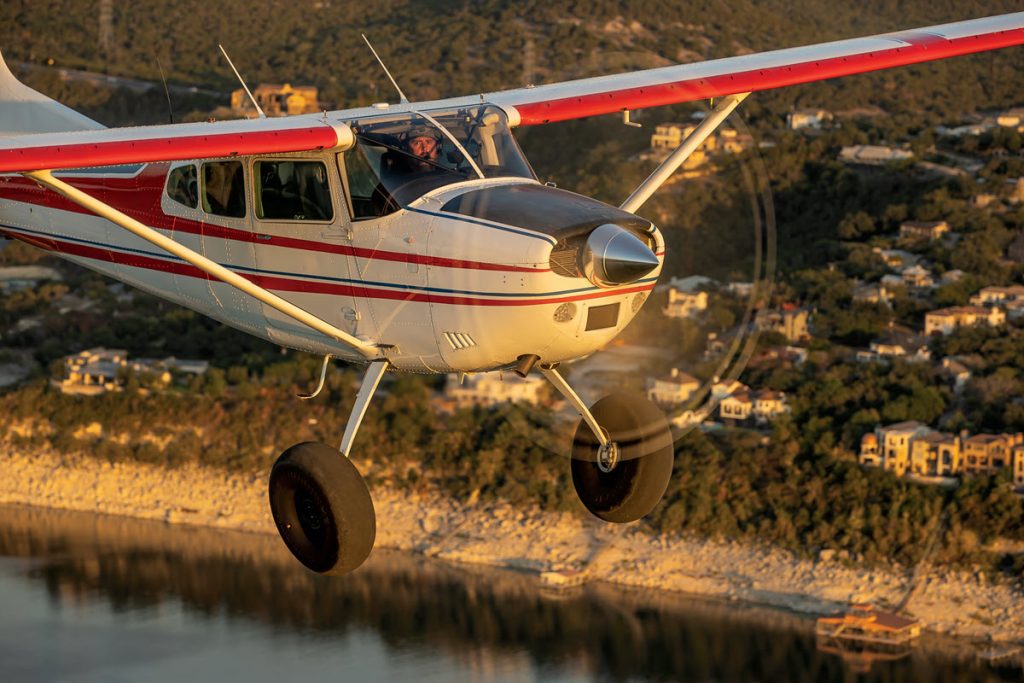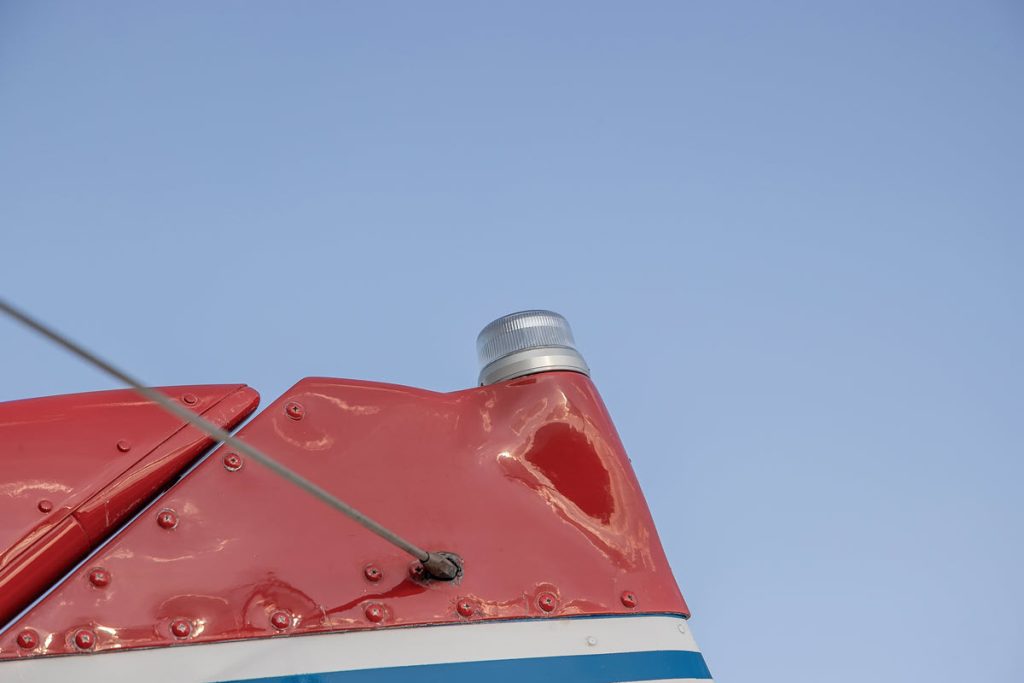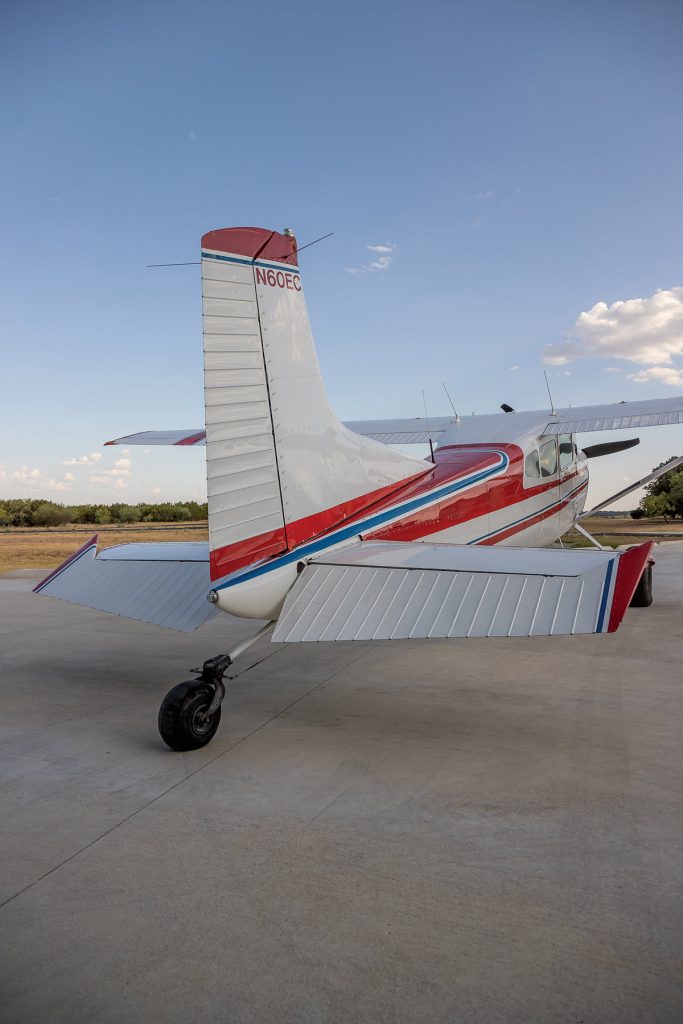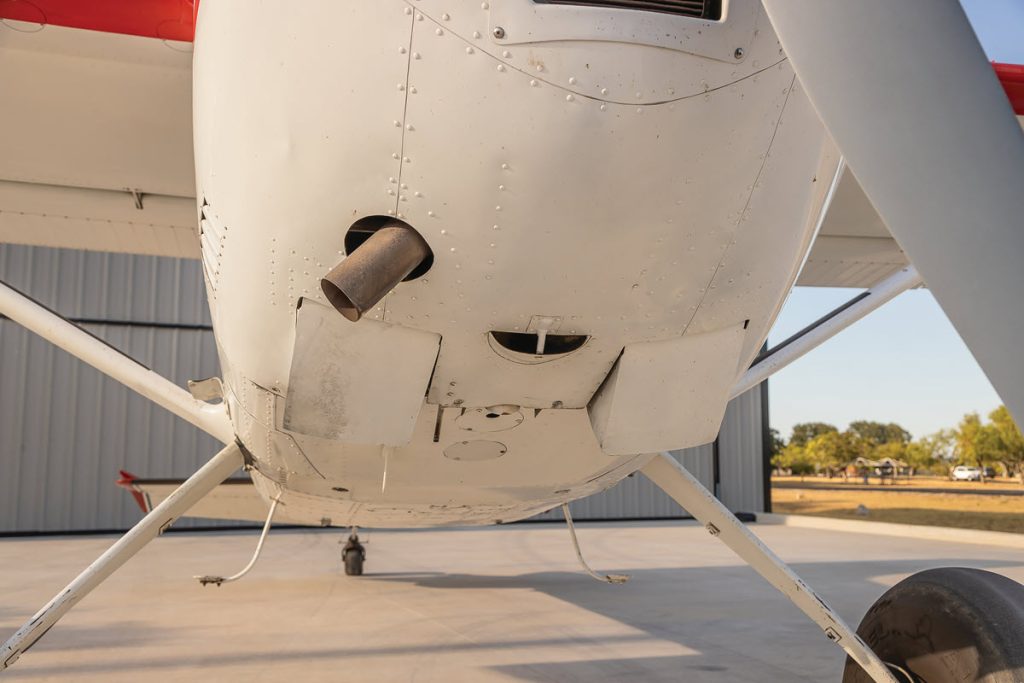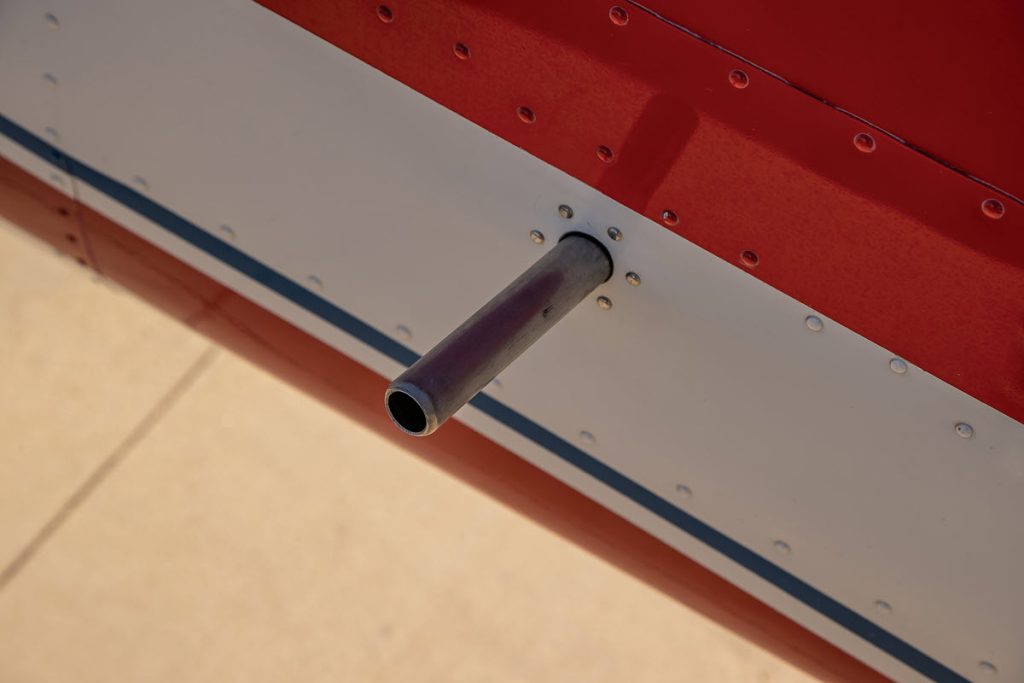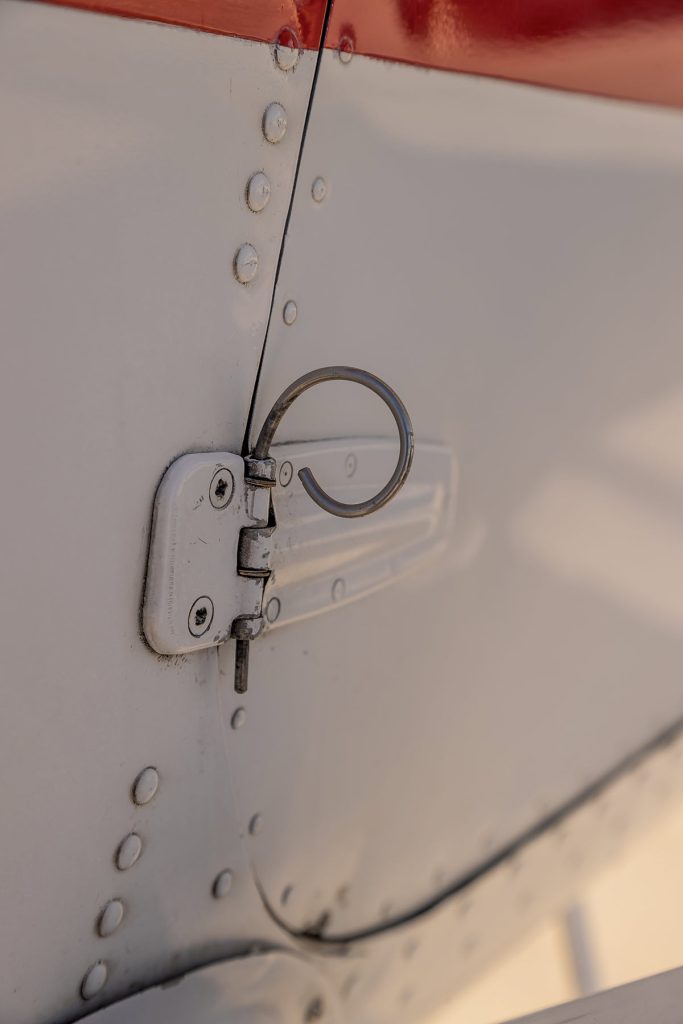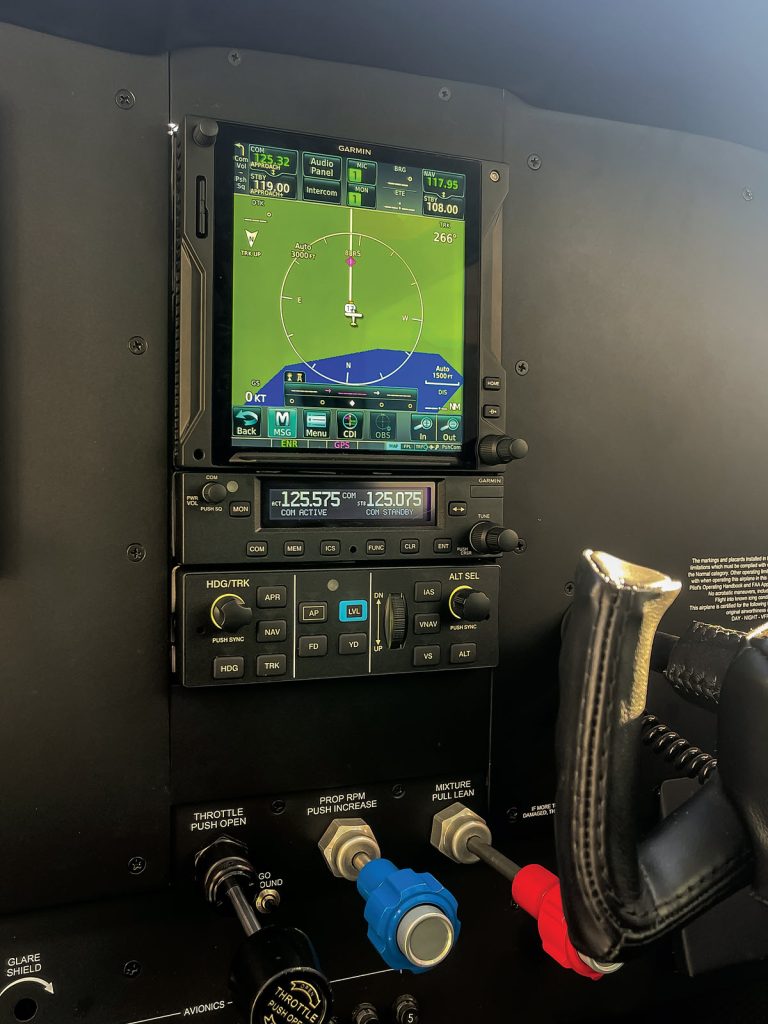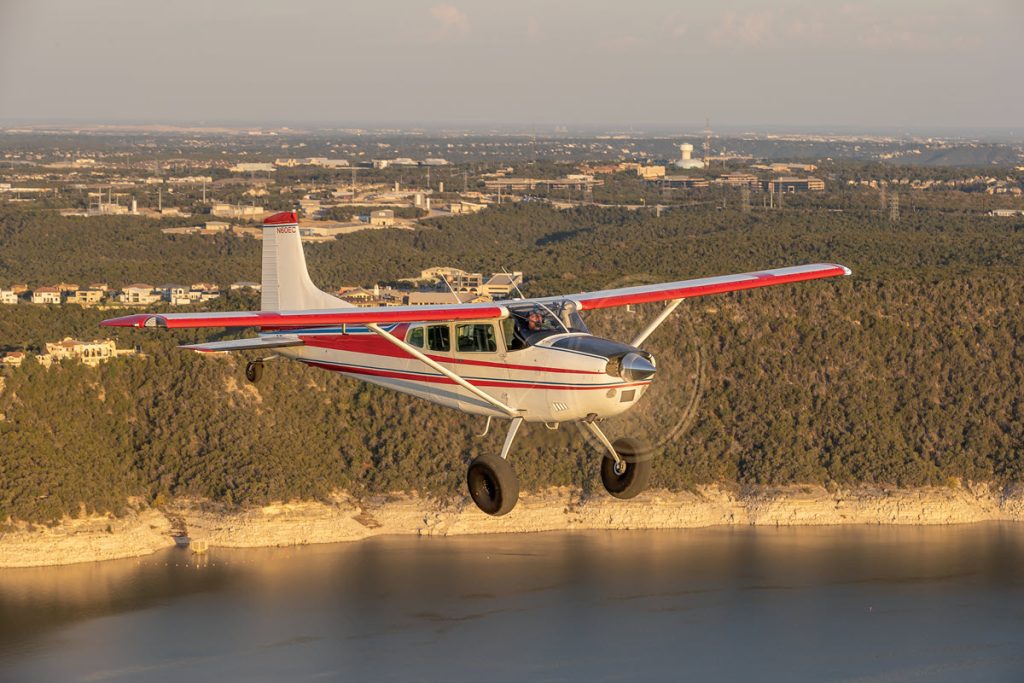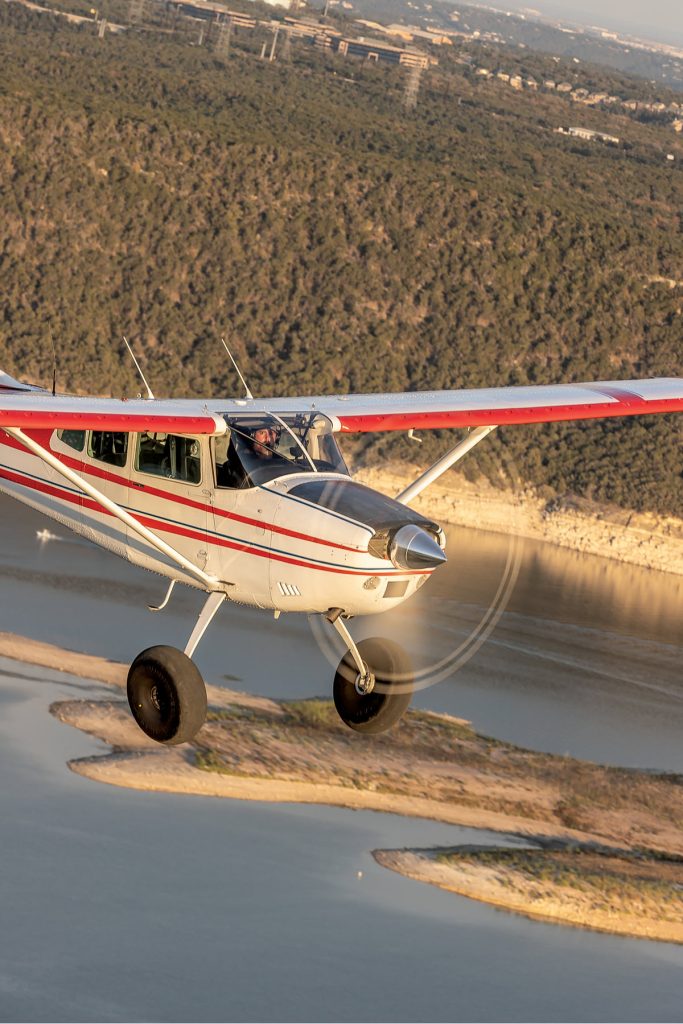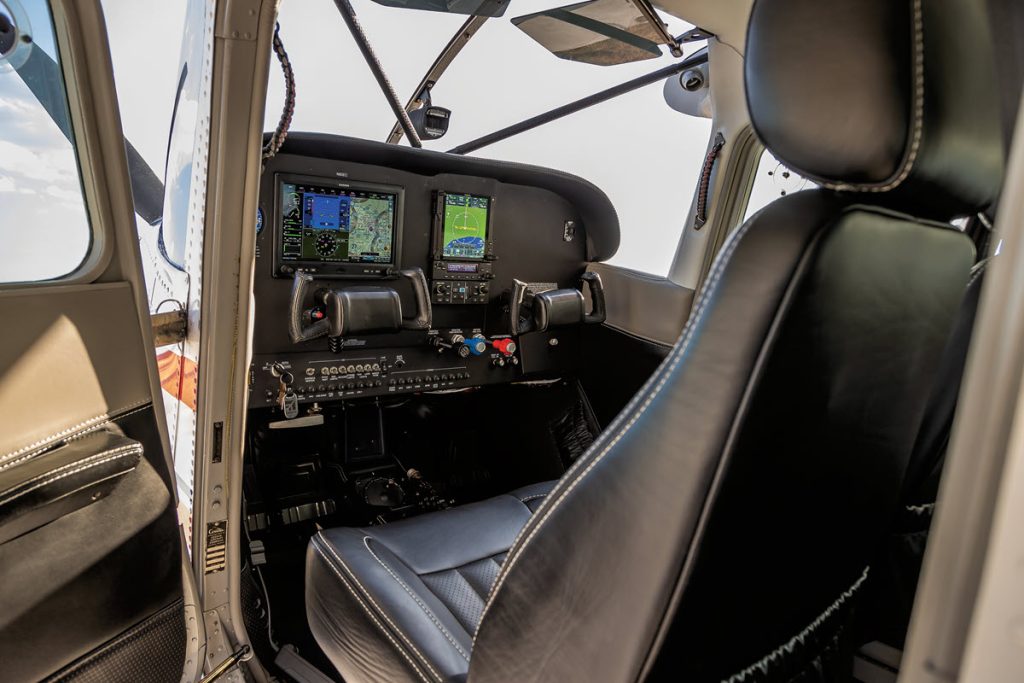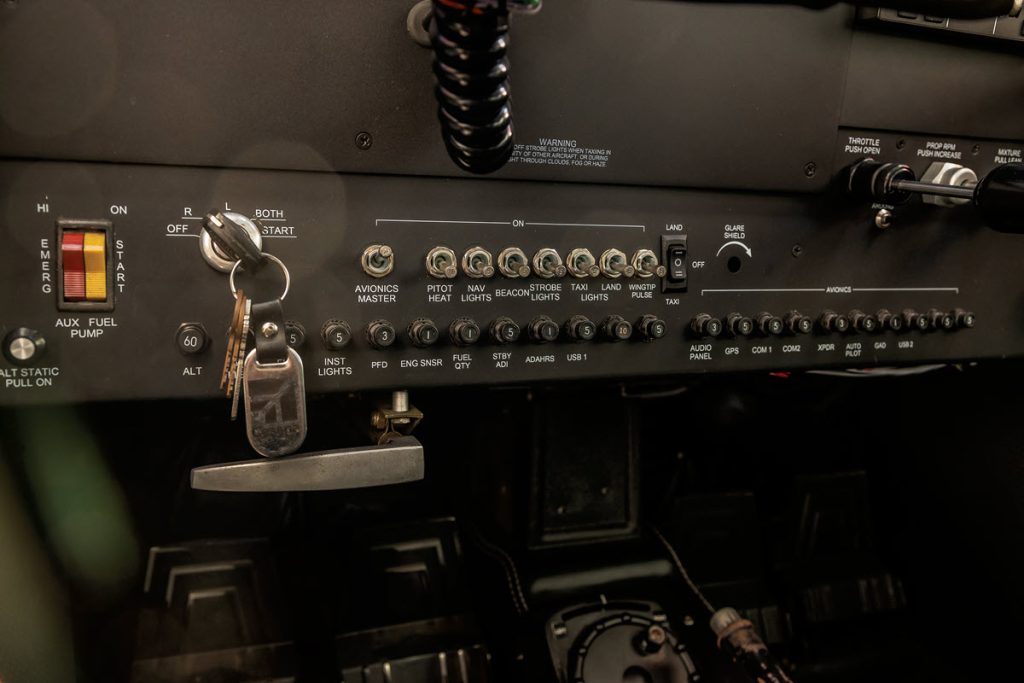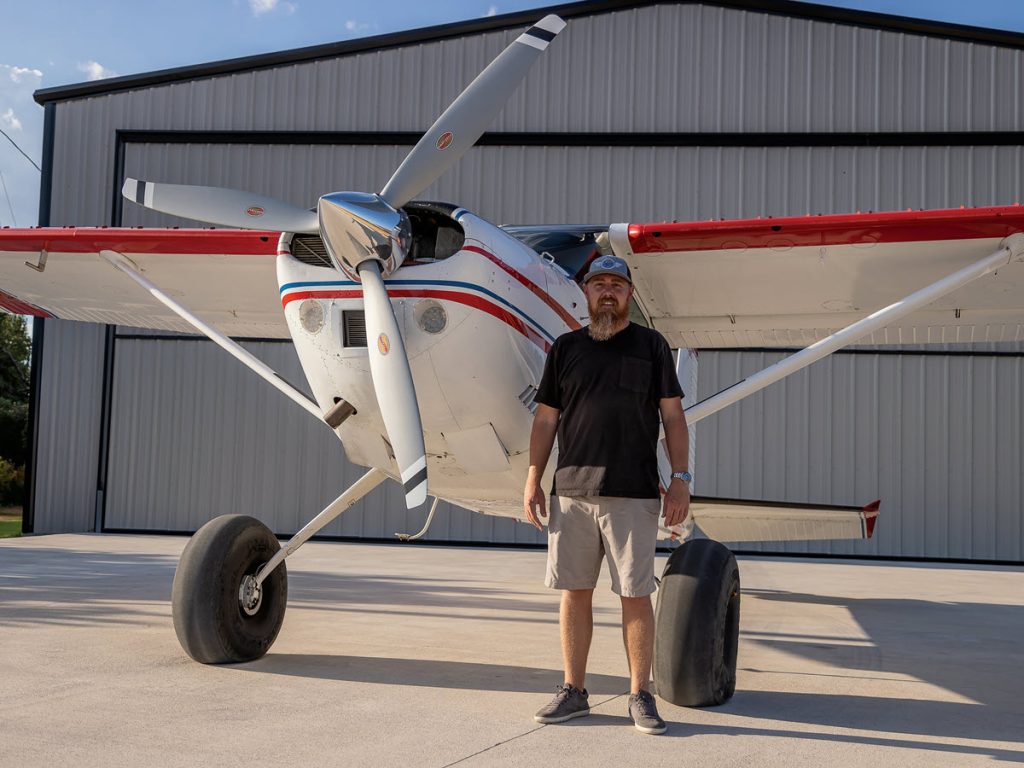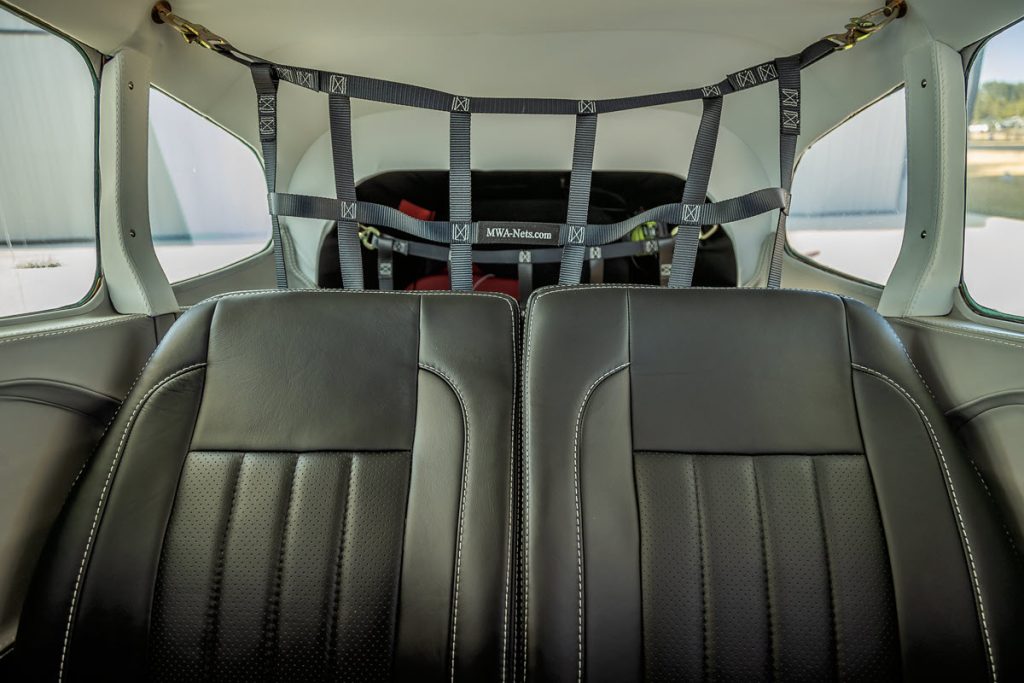
By Zach Wright
Nobody in my family was a pilot or involved in aviation, but I started flying roughly 10 years ago on a whim once life, work, and funds allowed, and I simply got hooked. I currently own a 1982 Cessna 421C Golden Eagle, as well as a 2023 Legend MOAC Super Cub in addition to this 1979 Cessna A185F Skywagon. In the past, I have owned a Mooney M20K and a very nicely built and restored Piper PA-12 Super Cruiser and have come to enjoy the tailwheel life and flying off field more than just getting from point A to point B fast.
Bridging the Gap With the Skywagon
I originally purchased the Skywagon to restore it to the way it is today for the mission of traveling to more distant camping spots, exploring more in a shorter amount of time, but also to enjoy time with my kids, off pavement. The PA-12 wasn’t suited for multiple kids, and neither was the Super Cub. At the time, the 185 was perfect when we had just two kiddos, but with a third in the mix, it has become my traveling machine bridging the gap between the 421C and the Super Cub. The 185 offers excellent off-field performance when flown correctly but with the additional ability to carry more and cover much more ground, faster, and is simply one of the coolest and most capable taildraggers around.
When I bought my 185, N60EC, in California three years ago, I purchased it with the intent to redo the interior, completely replace the avionics, and add some of the necessary STCs to make it current and modern as well as carry it forward for the next generation. I hope at least one my three kids — if not all of them — can fly this airplane one day.
I wanted 60EC to be a capable IFR machine with a very comfortable interior that matched today’s highest-end automobiles but also be suited to land on sub-1,000-foot strips where few others could go, while still carrying the gear needed without leaving anything behind. The Skywagon is a wonderful machine that bridges the gap between a Super Cub and a pavement-pounding real traveling machine. Even with 29-inch Alaskan Bushwheels, it cruises at 140 knots true and, with 88-gallon tanks, it allows for quite the range. With smaller wheels and an IO-550, it would be even quicker.
A Solid Plane Improved With Major Upgrades
When I purchased the airplane, it was in solid shape mechanically but needed cosmetics and the new-at-the-time tail AD done. It already had a Sportsman STOL leading-edge cuff, which was perfect, but I wanted more, and it needed more.
Since I bought it, Nick at West Coast Wings has rebuilt the horizontal down to the spar to better-than-new condition, Aviation X Interiors refurbished the interior, Abilene Aero completely redid the upper and lower avionics panel, and I did a slew of other tasteful upgrades that make it what it is today.
Some of these upgrades include a full Garmin suite of avionics to include a G3X Touch PFD, GTN 750Xi Navigator, GMA 35c remote audio panel, GI 275 standby instrument, GTX 345R transponder, GEA 24 engine instruments, GAP 26 AoA, GSB USB ports, as well as the GFC 500 three-axis autopilot.
Other upgrades include CiES fuel senders, Airframes Alaska six-bolt wheels, Alaskan 29-inch Bushwheels, Airframes Alaska tail fork and Baby Bushwheel, a Hartzell Voyager 86-inch prop, GAMIjectors, Stene Quasar wingtips with AeroLED lights, QMI Inc. trim wheel, QMI Inc. tail cone reinforcement kit, numerous Selkirk interior panels covered in leather by Aviation X Interiors, Precise-Flow air vents, BAS shoulder harnesses, Door Stewards, P.Ponk gearbox reinforcement, P.Ponk elevator and rudder bushings, McFarlane jackscrew kit, Tanalian Aviation horizontal stabilizer leading edge kit, Rosen Sunvisors, Oregon Aero exhaust heat shield, Mountain Wave Aviation LLC cargo nets and Micro Aerodynamics Inc. vortex generators.
The greatest thing about the Skywagon is that I can land it on riverbeds like I do my Super Cub, but I can also go the distance and carry the load and take a couple friends or family along with me. If I want to go to Houston for work, it can do that efficiently as well. If I want to fly it IFR and into the Bravo, it does that well also. My 185 has close to a 1,500-pound useful load and is a Swiss Army knife of sorts. Versatility is at the top of the list in a 185. It does a lot and it does a lot very well, and it looks cool as heck while doing it. After all, there is no better sound in GA than a Skywagon with an IO-520 taking off!
1979 Cessna A 185F Specs
These are the specs for a 1979 Cessna A185F. Every vintage airplane is now different; do not use these specs to plan a flight. All data taken from the
Standard Catalog of Cessna Single-Engine Aircraft (JP Media LLC).
| Engine: | Continental IO-520-D |
| Horsepower: | 300 |
| Top Speed: | 178 mph (155kts) |
| Cruise Speed: | 167 mph (145 kts) |
| Fuel Capacity: | 88 gal |
| Range: | 835 nm (@economy Cruise) |
| Gross Weight: | 3,350 lbs |
| Empty Weight: | 1,681 lbs |
| Avg. Useful Load: | 1,681 lbs |
| Takeoff Ground Roll: | 770 feet |
| Takeoff Over 50 ft Obstacle: | 1,365 feet |
| Landing Ground Roll: | 480 feet |
| Landing Over 50 ft Obstacle: | 1,400 feet |
| Rate of Climb: | 1,010 fpm |
| Service Ceiling: | 17,150 feet |
| Doors: | 2 |
| Seats: | 6 |
| Electrical: | 28v |
| DIMENSIONS (APPROX.) | |
| Cabin Width (at shoulder) | 40-1/4 inches |
| Length | 25 feet, 7-1/2 inches |
| Height | 7 feet, 9 inches |
| Wingspan | 36 feet |
Pre-Purchase Research
The best advice I can give someone looking into a Skywagon is first to figure out if you want an earlier, lighter weight example, or, like me, a “newer” one that’s heavier and can be a 3/4-ton-truck while still performing well in the right hands. Once you figure that out, make sure you get a proper pre-buy, paying special attention to damage history, and the gearboxes and tail, which both take a beating when using the airplane as it was intended.
Post-Purchase Training
After that, get proper training. The 185 is a heavy taildragger and isn’t the same as flying a Super Cub or other light tailwheel airplanes. Some 185 instructors will tell you that it’s unlike any other taildragger you’ve ever flown. There’s a difference in how it handles going from very light to very heavy loads, and you have a large amount of mass out back and a huge vertical that catches a ton of wind if it’s coming at you from the side.
Proper training is key but will be very rewarding when all is said and done. I flew initially with Jon “Jughead” Counsel, who helped me tame the beast and get it home. Later I flew with Milne “CC” Pocock when I wanted more. I can recommend them both very highly for 185 or other tailwheel training.
A Heartfelt Thank You!
Having spent almost a year getting this Skywagon to the way it is today, there is little I would do differently and I believe it is one of the nicer examples out there, thanks to the vendors mentioned, as well as Mike, Ken, and Brian at Gafford Aero in San Marcos, Texas, who handle the maintenance on all of my airplanes and have for almost 10 years.
All in all, I love the Cessna A185F Skywagon’s attributes and believe it is one of the best airplanes ever made.
To follow this airplane and its adventures, check out #hillcountryskywagon on Instagram.
Select a photo below to open a pop-up slide-show



